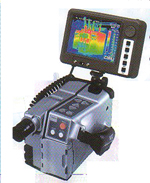Case 3
Navigation
- Introduction
- Causes of Defects
- Good Practices
- Standards
- Maintenance and Diagnostics
- Remedial
- Similar Cases
- References
Maintenance and Diagnostics
- Regular inspection is important to detect and identify existing defects immediately, so that corrective maintenance at early stages could be carried out to prevent further complexities [2]. Visual inspection techniques or instrumentation techniques can be used for regular inspections.
- Dust with a water-dampened cloth. If the surface is very soiled, wash with a solution of mild, non-abrasive detergent and warm water. Wring a cloth nearly dry and work on a small section at a time, then rinse with clear water. Dry the surface quickly before continuing.
- Periodic re-painting (about 5-7 years period) is required to keep the surface free from such peeling.
Diagnostics of Defect
Visual Inspection
- Peeling of paint is easily visible.
- Investigate the potential sources of dampness. Use a moisture meter to establish the extent of dampness in the substrate.
Moisture Meter

Moisture meter that measures the reduced resistance between two probes when they are embedded in damp materials (Figure 1). It can be used to trace areas of walls affected by rising damp or rain penetration.
Measurements should be taken at regular intervals to distinguish if it is surface dampness or dampness within the wall.
Thermography

Thermography can be used to identify the position of water leakages [13-14]. The method is based on the characteristics of heat flow phenomenon, in a conductive medium of specific geometry, which is intended to model predetermined boundary conditions.
Thermo tracer is an advanced equipment used in thermography technology (Figure 2).